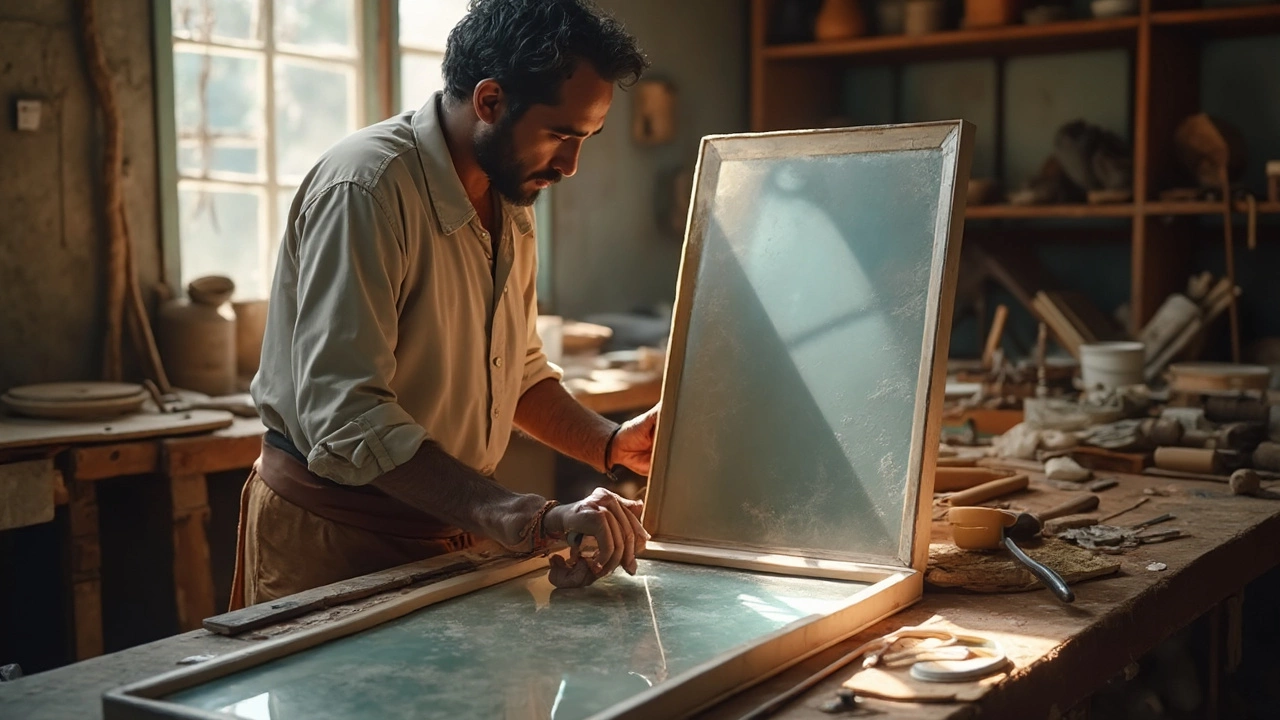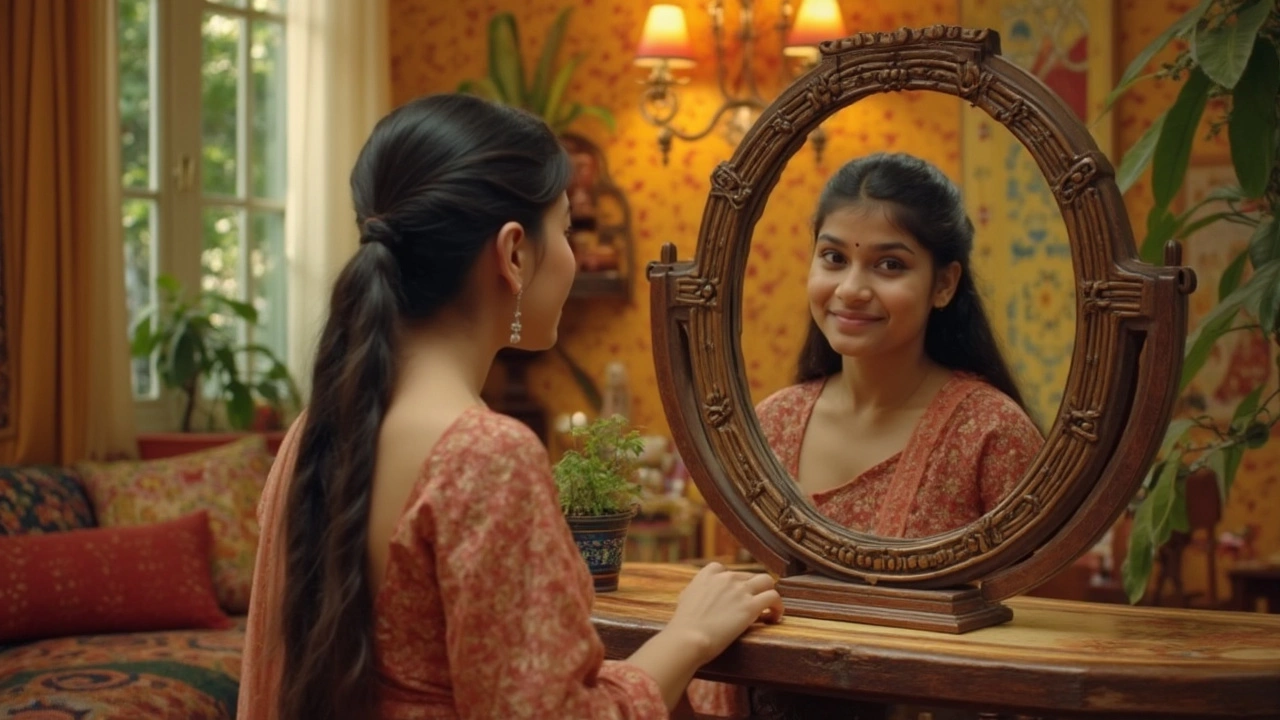If you’ve ever looked into a true mirror, you probably did a double-take. These mirrors show your face without flipping it left-to-right—no wonder the price tag can be such a shock. A regular mirror is basically just one piece of glass with a silvered back. True mirrors, though, use two mirrors joined at a perfect 90-degree angle, with their edges so precisely aligned that even the tiniest error will ruin the effect.
This level of accuracy isn’t something you get off the shelf at a home goods store. Craftspeople have to grind, polish, and glue these glass pieces with almost obsessive care. Even the smallest mistake can leave a line running down your face in the reflection, which defeats the whole point of a true mirror. That painstaking work? It costs money.
- Regular Mirrors vs. True Mirrors
- The Costly Design Secrets
- Manufacturing Challenges and Precision
- Are They Worth the Price?
- Tips for Buying or Building Your Own
Regular Mirrors vs. True Mirrors
So, what’s the deal with true mirrors compared to the regular ones hanging in your bathroom? The main difference? Regular mirrors flip your reflection left-to-right. This means when you raise your right hand, your mirror ‘you’ raises their left. Most of us never even question it, but that reversed image is not what other people see when they talk to you in real life.
True mirrors work differently. Instead of flipping your face, they show you exactly as you appear in person, with no left-right reversal. They do this with two mirrors connected at a perfect 90-degree angle. This setup bounces your image between both mirrors before sending it back to your eyes. That way, your reflection stays ‘true’—you see yourself the way your friends do.
Here’s a quick breakdown of how the two types compare:
| Type | How It Works | What You See |
|---|---|---|
| Regular Mirror | Single flat surface, image reversed | Your face is flipped left-to-right |
| True Mirror | Two mirrors joined at 90°, no reversal | Your real face, like in a photo or video call |
Some people find their true mirror reflection a little jarring at first. It’s not magic—it’s just that we’re used to seeing a reversed version of ourselves every day. Studies suggest that true mirrors can even change how people feel about their appearance, just because it looks more natural and less awkward than the reversed one.
So if you’ve wondered why an optical mirror like this costs so much, remember that it’s not about fancy framing or new tech. The expense comes from the exact way that true mirrors are made and the totally different experience they give you.
The Costly Design Secrets
Here’s the thing about true mirrors: regular mirrors just bounce your reflection straight back with a single sheet of coated glass, but a true mirror relies on a crazy level of engineering to keep your reflection accurate. The secret is in those two separate mirrors, joined together in a perfect right angle. Why does that matter? Because if they’re off by even a hair, the image splits or distorts, and the mirror stops working as advertised.
In fact, most true mirrors use optically flat glass, which is way more demanding to produce than regular stuff. This glass has to be ground and polished until there’s no visible bump or dip—nothing over a few microns. (For context, a human hair is about 70 microns thick.)
The glue used to join these mirrors has to be something special, too. If it’s the wrong formula, it can yellow or shrink over time, leaving a visible gap right in the center of your reflection. Top makers also use custom brackets or internal frames to hold everything in place for years. That means more custom hardware and a ton of extra work compared to a run-of-the-mill bathroom mirror.
To give you an idea of the effort, look at this simple breakdown:
- Double glass precision-cutting and grinding
- Perfect 90° angle alignment with no visible seam
- Optical-grade, non-distorting glass
- Special adhesives to avoid yellowing or shifting
- Custom brackets/frames instead of mass-produced parts
With all these steps just to make a single true mirror, no wonder the costs can hit hundreds—or even thousands—of dollars. Most factory lines aren’t set up for work this delicate, so every mirror tends to get a lot of hands-on attention. That’s not cheap or fast, which explains the hefty price tag.

Manufacturing Challenges and Precision
Building a true mirror is nothing like throwing together a standard mirror. The hardest part? Getting those two mirrors lined up at a perfect 90-degree angle. If the angle is even a hair off, you get a noticeable seam that ruins the whole "non-reversed reflection" magic. This isn’t something a machine can knock out in seconds—it takes real skill and lots of patience.
Another tricky bit is making sure the glass edges where the mirrors meet are flawless. They have to be polished down so there’s zero distortion when the two reflections meet in the middle. Mess this up, and you’ll see a distracting line or weird double image right down your face. Companies making true mirrors often have to hand-finish every edge, which adds to the cost and time it takes to make each one.
You also can’t use just any old glue. Manufacturers often use special optical adhesives—these are super clear and strong, so they don’t leave behind streaks or affect the way light passes through the glass. Sometimes UV-cured adhesives are used, which need special lamps to set the glue just right.
Oh, and forget about mass production. Demand for true mirrors just isn’t that high, and it isn’t easy to automate this kind of careful work. Most true mirrors are made in small batches, or even by hand in a workshop, and every single one goes through close inspection before it leaves. Quality control is a big deal—nobody wants to pay a premium for a mirror with a crooked seam or a blurry reflection.
Check out how the time and cost stack up compared to regular mirrors:
| Mirror Type | Manufacturing Time (per unit) | Typical Cost (retail) |
|---|---|---|
| Regular Mirror | Minutes | $10-$50 |
| True Mirror | Hours | $200-$400 |
So, while it might seem wild to drop a few hundred dollars on a mirror, you’re really paying for precision, skilled work, and a unique effect you can’t get from a regular piece of glass.
Are They Worth the Price?
So, are true mirrors really worth what you pay? Honestly, it depends on what you want from a mirror and your budget. If you just want to check your hair or do your makeup, a standard mirror is all you need. But if you’re curious about how you actually look to others—without that left-right flip—a true mirror offers a totally different, sometimes eye-opening experience.
For artists, therapists, and even public speakers, true mirrors can be game-changers. Seeing yourself without the reversed image can help boost self-awareness, practice body language, or even get over camera shyness. Some users say they finally recognize certain facial expressions for the first time, which can be important for personal growth or creative work.
True mirrors aren’t mass-produced like regular mirrors, which keeps prices north of $200 for even the smallest sizes. Custom options or museum-grade versions can pass $500 easily. Here's a simple comparison table:
| Mirror Type | Average Price Range (USD) | Key Features |
|---|---|---|
| Standard Mirror | $10 – $50 | Common, reversed image, easy to find |
| True Mirror | $200 – $700 | Non-reversed image, precise design, niche use |
Is it a must-have for every home? Probably not. But for folks in creative or psychology fields—or anyone super curious about self-perception—it can feel totally worth it. If you're thinking of buying, make sure you’re getting a real true mirror (with perfect 90-degree alignment) or you’ll pay premium prices for a gimmick that’s no better than DIY hacks.

Tips for Buying or Building Your Own
So, thinking about getting your own true mirror? There’s a lot to consider before you drop a big chunk of cash or try making one by hand. Let’s break it down so you can skip the rookie mistakes.
If you’re buying online, make sure the seller has good close-up photos of the seam where the two mirrors meet. That joint should look almost invisible—if you spot a jagged line or a visible gap, the whole point of the true mirror is basically wasted. Quality matters big time with these things, so read reviews from customers who’ve posted actual photos, not just stock images.
- Look for the term “front-surface mirror.” This is what real true mirrors use. A regular mirror reflects through glass and creates ghosting, but front-surface mirrors reflect right off the surface for a crisp, undistorted image.
- Check the mirror sizes. The bigger the mirrors, the easier it is to get a clear, lined-up image, but the price rises fast. Most legit models use mirrors at least 12 inches tall.
- Ask about return policies—they’re pricey, so you want security if something’s wrong with the seam or glass.
Curious about a DIY version? It’s doable, but be ready for fine-tuning and some trial and error. Start with two front-surface mirrors (they’re more expensive than the regular kind). You’ll need:
- Two identical front-surface mirrors (minimum 6" x 6")
- A sturdy 90-degree jig or some way to hold the mirrors tightly together
- Clear epoxy or high-strength adhesive suitable for glass
- Microfiber cloth and glass cleaner (to clear smudges at the joint)
- Set up the mirrors in your jig so the reflecting sides face each other at a perfect 90-degree angle.
- Clean the edges. Even tiny bits of dust can ruin the seam.
- Glue carefully—just the very edges. Avoid squeezing too much glue, or you’ll see globs in your reflection.
- Wait until everything sets, and check the seam in good light. You may need to reposition or wipe the edges before the adhesive dries.
Even pros sometimes need several tries to get the alignment totally seamless, so don’t get frustrated if it’s not perfect on day one.
Here’s a quick comparison table that might help you decide if buying or building is right for you:
| Option | Estimated Cost | Time Needed | Success Rate |
|---|---|---|---|
| Buy ready-made true mirror | $200–$500 | 1-2 weeks shipping | High |
| DIY true mirror | $80–$200 | Several hours (plus possible re-dos) | Medium |
If you just want to experience a true mirror without the cost, check local science museums—some have one you can try, totally free. That way, you’ll know if it’s really worth the investment for you or just a cool one-time novelty.
